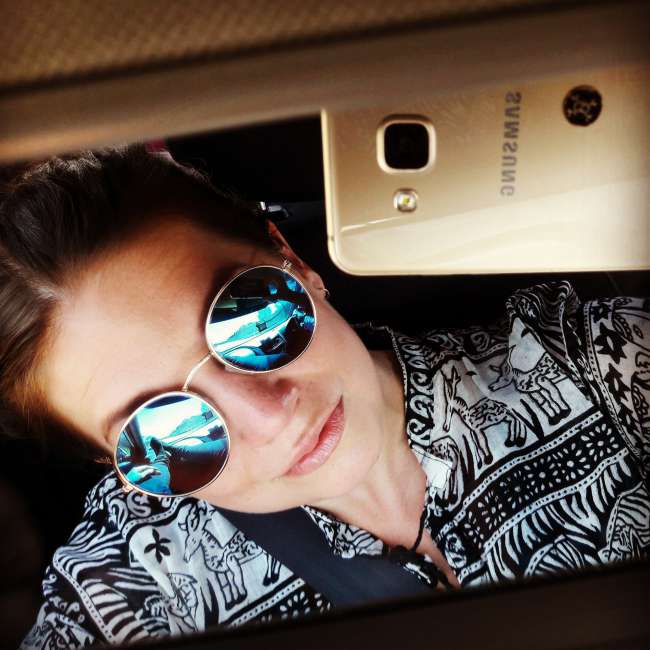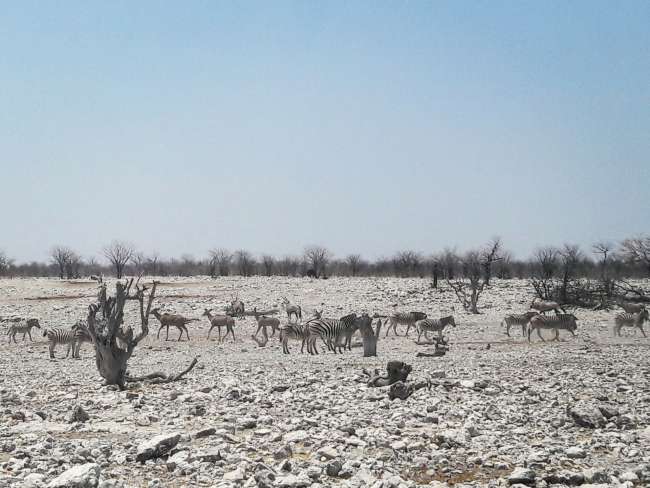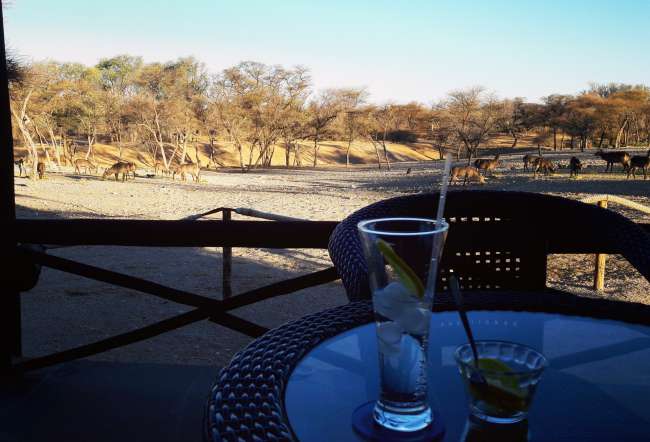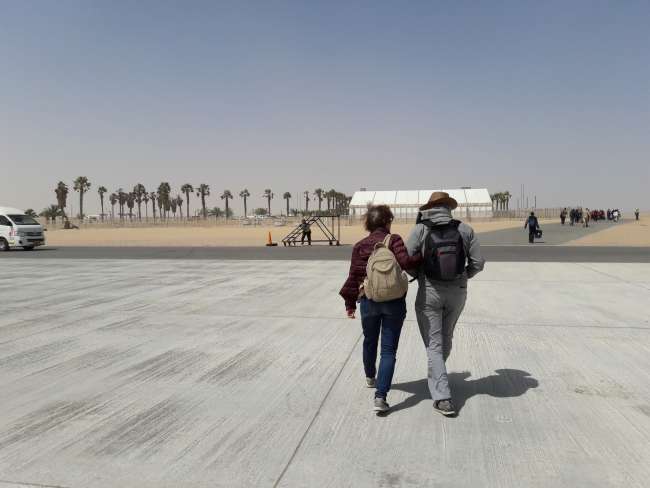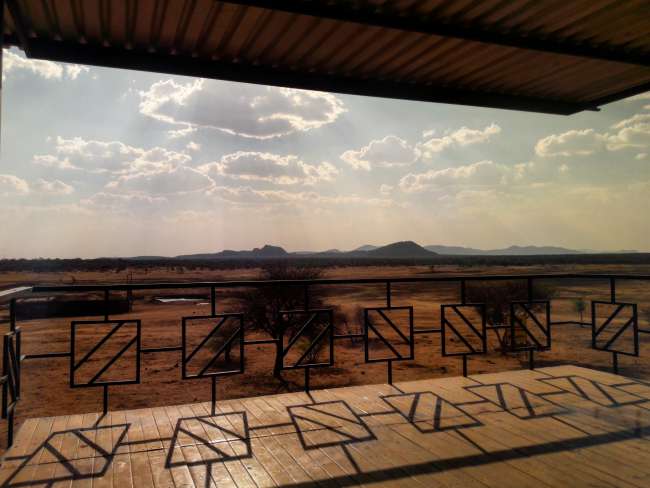Part II: Namibia
Gipatik: 25.10.2016
Mag-subscribe sa Newsletter
And off we go to Namibia! After a confusing and hectic transfer maneuver in Johannesburg, we land a little battered in Walvis Bay. An airport that couldn't look any more bizarre: surrounded by nothing but sand, we fight our way through strong winds to a single white tent and a few background palm trees.
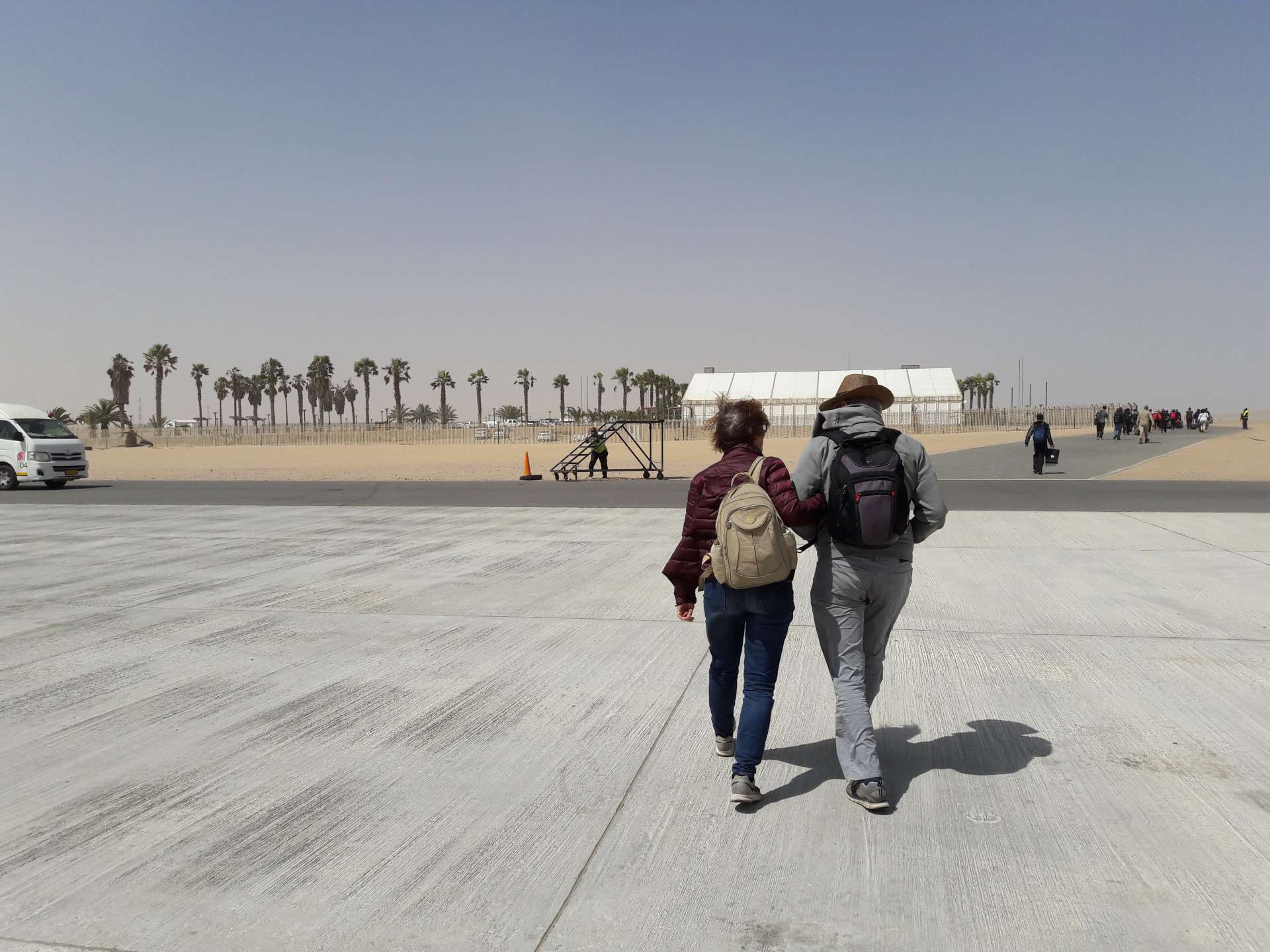
We spend our first night in the beautiful town of Swakopmund, a colonial-era city where Diane & Uschi handle real estate and letters are still delivered to the 'post office' to this day.
Just checked out of 'Eberwein', we set off in a off-road vehicle through the seemingly endless desert landscape.... and landscape, landscape, landscape - as a city dweller from a relatively densely populated area, sometimes you have to literally have the dimensions of our earth brought to your attention again.
After crossing one gate after another and leaving behind a good stretch of dirt road, we reach a small, animal-rich paradise in the midst of this barren landscape, which, as we will soon learn, shouldn't look like that at all.
Namibia is feeling the full force of climate change, with no proper rain for almost three years, the hearty manager of the paradise tells us. As I think about the struggle for survival of the local animal and plant life, I immediately see the grim faces of my rain-plagued compatriots in front of my eyes and feel a little ashamed of how often I have cursed our 'crap weather'.
The wildlife farm, which welcomes us with cool dog noses, an overly cute orange drink, and bright bird chirping, serves, much to my delight, the breeding of purebred Arabians as a source of income alongside tourism. Of course, I can't help but hold my hand in front of the eager young stallion's flared nostrils. 'Quite a show-off,' I think as the handsome little guy trots around, presenting his muscular body and elegantly curved neck from all angles. In the evening, we can watch various species of antelopes, warthogs, and of course the always bustling guinea fowl while having an aperitif on the restaurant terrace; at the moment, they have to be fed.
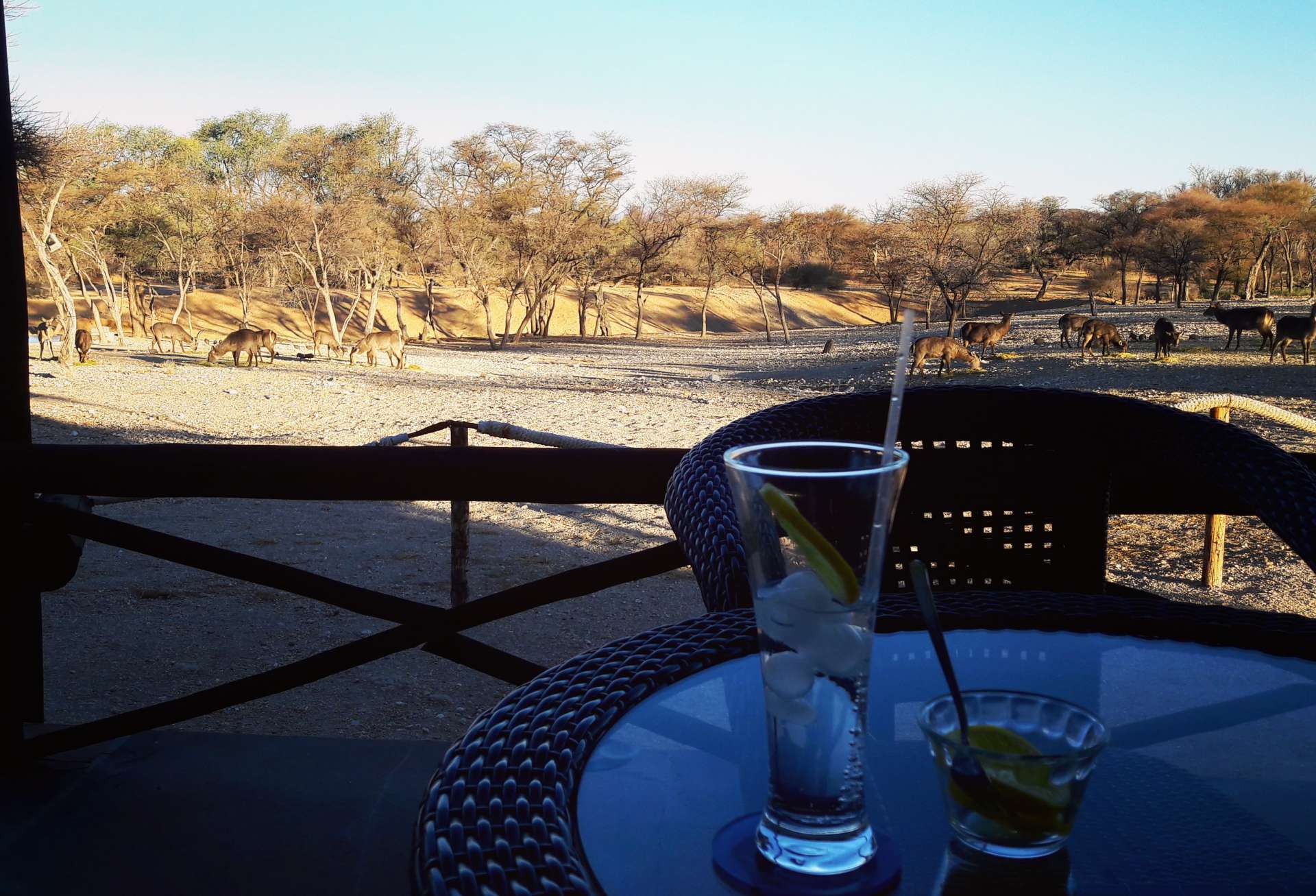
The next morning, after my discovery tour on horseback through the huge grounds, we unfortunately have to say goodbye to all the chickens, horses, dogs, and charming employees. The traditional chants and the lively chirping have a long-lasting echo.
The Etosha National Park reveals the full extent of the incredible drought: like an icy winter landscape, the dry bushes and trees completely covered in chalky dust make the park appear. Zebral herds and countless antelopes creep around there, well camouflaged. We can hardly open the windows of our air-conditioned vehicle, as the hot air that greets us is sweltering. The colorful life takes place at the partially artificially created waterholes: ostriches look amazed at galloping, playfully fighting zebra herds, majestic oryxes lower their heads suspiciously only after checking their surroundings several times to enjoy a sip of cool water, and birds peacefully peck at the edge. When a gray giant slowly but surely marches towards the water from a distance, he is guaranteed a prime spot for drinking, showering, and mud bathing. We simply can't get enough of the ever-changing spectacle that is presented to us on this bizarre stage of nature for eight continuous hours.
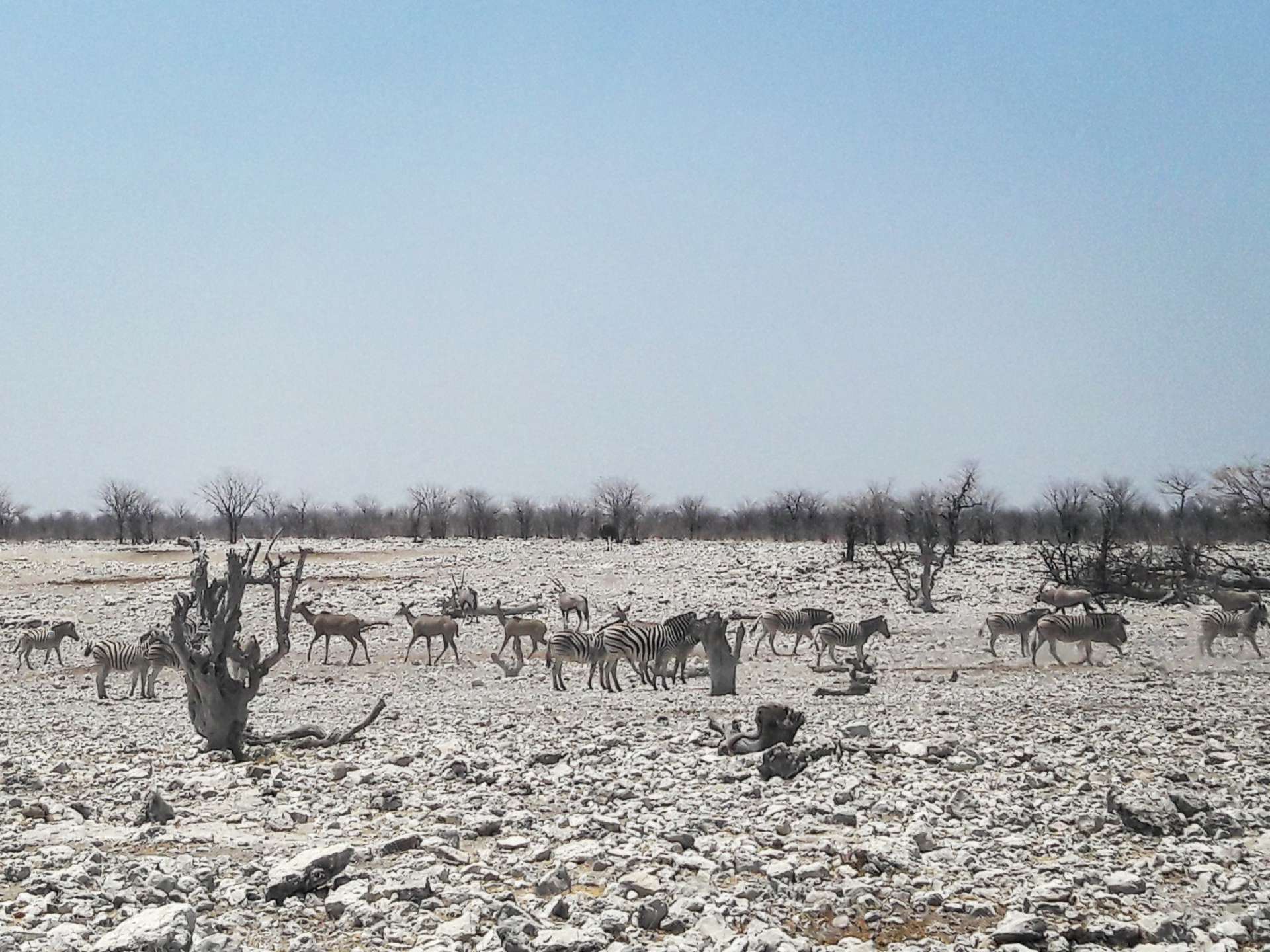
Namibia fascinates us, enchants us, and makes us very thoughtful. Therefore, it is just right that we can spend the last few days on a private farm, where we sit together with our hosts at the table in the evenings and talk about the fact that only human beings need the world and not the other way around, over a slice of delicious homemade bread. With these reflective, instructive, and hilarious last days, we can properly conclude our journey here with the old hunter, his son, and his wonderful wife.

Mag-subscribe sa Newsletter
Tubag

